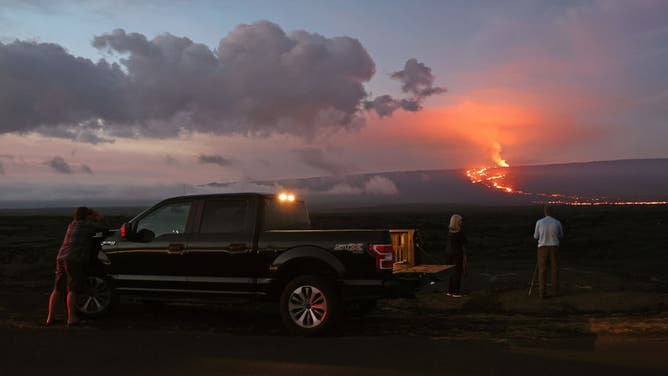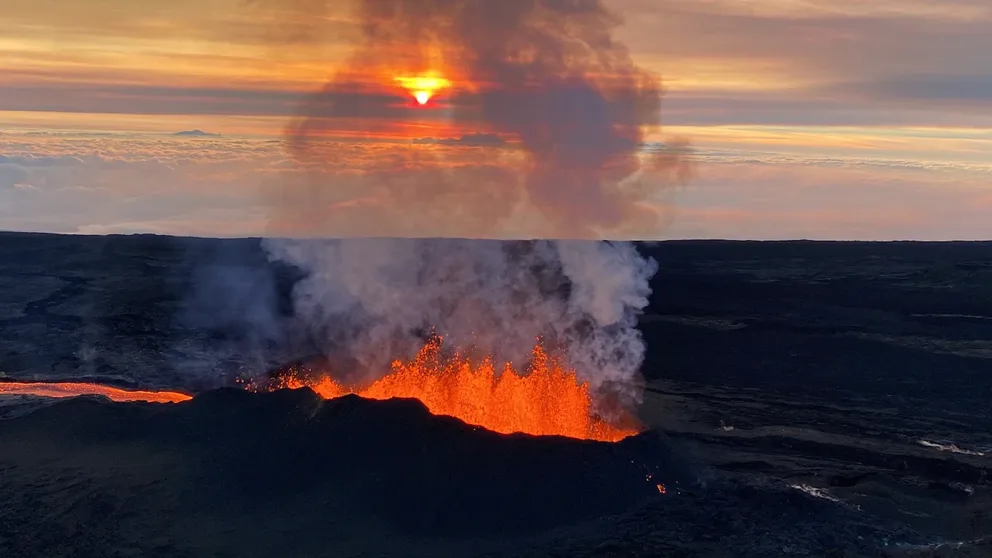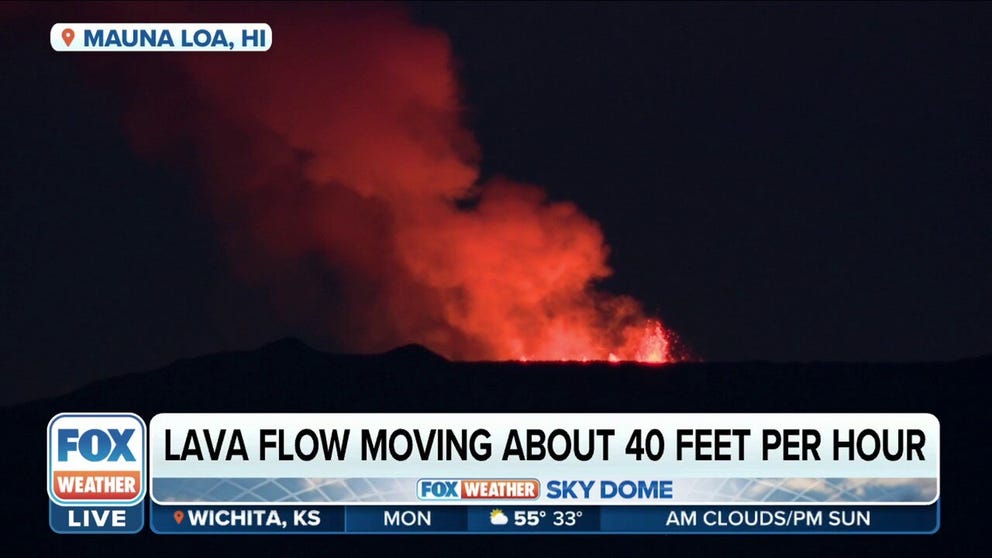Hawaii officials detonate unexploded objects near Mauna Loa lava field
Trespassers into the lava hazard area could be fined due to the dangers of crossing the safety zone. Hidden crevasses, molten lava and unexploded military ordnances are potential hazards for trespassers.
Mauna Loa volcano trespassers warned about serious dangers after unexploded ordnance found near lava field
In addition to hidden crevasses and hot lava, unexploded ordnances from a nearby military training ground also pose a serious risk.
Viewers continue to flock to Hawaii's Big Island to see the ongoing eruption of Mauna Loa. However, officials are warning eager spectators to stay within the designated safe volcano viewing area and not just because of the 2,000-degree lava.
Over the weekend, an unexploded military ordnance (UXO) was discovered near the lava viewing site.
The viewing area is located near the U.S. Army Pōhakuloa Training Area, or PTA, which sits between Mauna Loa, Mauna Kea and the volcanic mountains on the Big Island of Hawaii.
WHEN WILL MAUNA LOA STOP ERUPTING?
Army and county officials exploded the device, and the viewing site reopened Sunday night.
"Please abide by all guidelines - park in the designated area, stay on the road, and do not walk on the lava rocks," the PTA warned.
However, people were still venturing beyond the safe zone.
VOLCANO CAM: WATCH MESMERIZING LIVE VIEWS OF MAUNA LOA'S LAVA FOUNTAIN ERUPTING
Officials warn of unexploded explosives near Mauna Loa lava viewing site
Viewers flocking to Hawaii to see the Mauna Loa eruption are being warned about the hazards of venturing into the restricted areas due to unexploded ordnances. The eruption is expected to continue as volcanologists are tracking tremors around Mauna Loa.
FOX Weather correspondent Max Gorden was reporting from the Hawaii volcano zone Monday about 2 miles from Mauna Loa when several people were stopped after trespassing beyond the keep-out zone.
Dan Dennison, with Hawaii Department of Land and Natural Resources, said it is both perilous and illegal for people to cross into the active lava field.
"You could have UXOs," Dennison said. "You could have crevasses. You could have hot lava."
WHAT IS VOG? HAWAIIAN VOLCANOES CAN CREATE QUITE A BIT OF IT

People stand on the side of the road to photograph the eruption of the Mauna Loa volcano on December 04, 2022 near Hilo, Hawaii. For the first time in nearly 40 years, the Mauna Loa volcano, the largest active volcano in the world, has erupted. (Photo by Justin Sullivan/Getty Images)
(Getty Images)
WHEN WILL MAUNA LOA STOP ERUPTING?
Law enforcement and DLNR officials have issued several warnings to people who have trespassed into the lava hazard zone, but they could be fined.
Mauna Loa's explosive past: Bombing lava tubes

An aerial view of a bomb detonating on Mauna Loa near the 8,500-foot elevation source of the 1935 lava flow on the morning of December 27, 1935. This was one of twenty 600-pound bombs dropped on the lava flow that morning by the Army Bombing Squadron from Luke Field, O‘ahu. (Photo: Army Air Corps)
According to the U.S. Geological Survey's Hawaiian Volcano Observatory, human-made explosions around Mauna Loa are part of the volcano's history.
During Mauna Loa's 1935 eruption, the U.S. Army Air Corps dropped 600-pound bombs on the lava to prevent the lava flow from advancing toward Wailuku River, Hilo's water supply.
Volcano Observatory founder Thomas Jaggar believed if the bombs could destroy the lava tubes or channels, it would stop the flow from advancing. Another idea was getting close enough to throw dynamite onto the lava tubes.
Twenty bombs were dropped on Mauna Loa on Dec. 27, 1935. The flow stopped on Jan. 2, 1936. However, some were skeptical that this plan even worked.
USGS geologist Harold Stearns was onboard the last plane to drop explosives on the lava flows and believed the explosives missed the intended target by hundreds of feet. Stearns thought it was a coincidence that the lava flow stopped days later, but Jaggar was convinced his plan worked.
According to the USGS, whether the bombardment on Mauna Loa worked is still a hotly debated topic.
The world's largest active volcano first began erupting on Nov. 27 for the first time in nearly 40 years. Volcanologists continue to monitor tremors around the Mauna Loa, which indicates eruption will continue for a while.
The lava flow has slowed to about 40 feet per hour and is still about 2 miles away from Old Saddle Road or Hawaii Route 200, a main thoroughfare on the island.

